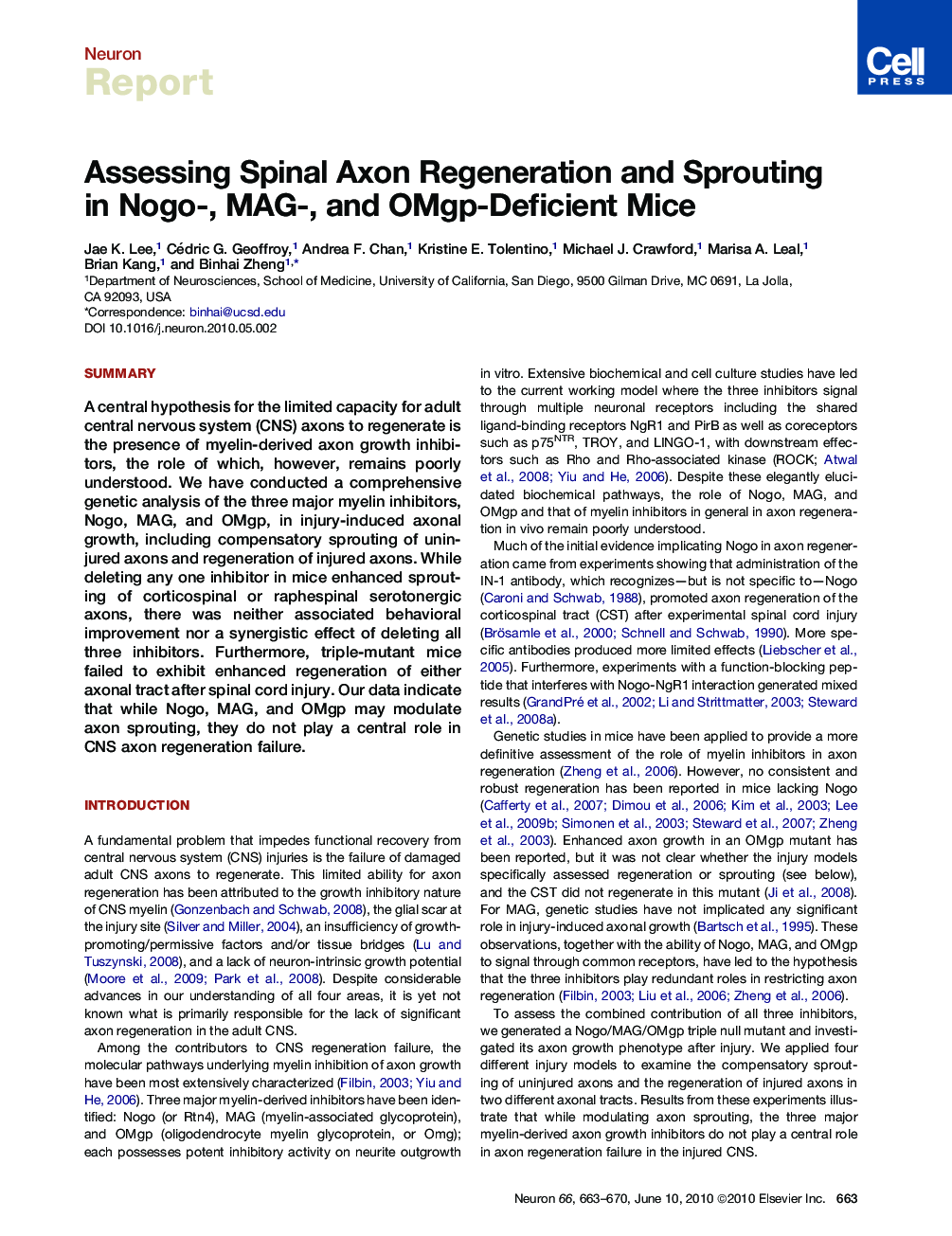| Article ID | Journal | Published Year | Pages | File Type |
|---|---|---|---|---|
| 4321936 | Neuron | 2010 | 8 Pages |
SummaryA central hypothesis for the limited capacity for adult central nervous system (CNS) axons to regenerate is the presence of myelin-derived axon growth inhibitors, the role of which, however, remains poorly understood. We have conducted a comprehensive genetic analysis of the three major myelin inhibitors, Nogo, MAG, and OMgp, in injury-induced axonal growth, including compensatory sprouting of uninjured axons and regeneration of injured axons. While deleting any one inhibitor in mice enhanced sprouting of corticospinal or raphespinal serotonergic axons, there was neither associated behavioral improvement nor a synergistic effect of deleting all three inhibitors. Furthermore, triple-mutant mice failed to exhibit enhanced regeneration of either axonal tract after spinal cord injury. Our data indicate that while Nogo, MAG, and OMgp may modulate axon sprouting, they do not play a central role in CNS axon regeneration failure.
► Deleting Nogo, MAG, and OMgp in mice does not enhance spinal axon regeneration ► Nogo, MAG, and OMgp may modulate axon sprouting after CNS injury ► Deleting all three inhibitors has no synergistic effect on sprouting or regeneration ► Functional recovery is not improved in Nogo/MAG/OMgp mutants after spinal cord injury
